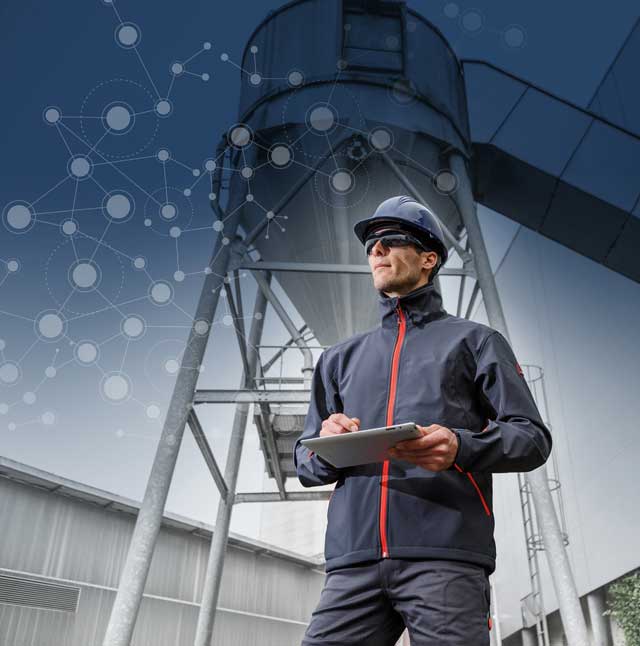
Recognising a pivotal role for prevention, and bringing in greater participation in OHS for employees themselves, this new international standard will usher in safer and healthier workplaces around the world, says Gene Vena, Honeywell Industrial Safety vice-president of engineering and chief technology officer
Prevention is at the heart of the recently-introduced international standard for occupational health and safety, ISO 45001 (Occupational health and safety management systems – Requirements), which is why the new standard will mark a welcome shift towards safer and healthier workplaces around the world.
It recognises the pivotal role that preventive measures play in tackling not only physical injuries but also ill-health in the long term, which account for a staggering 98% of occupational deaths in the EU.[1]
Published last month and due to come in force on 12 March 2021, ISO 45001 marks a significant step forward with respect to the role that occupational health and safety (OHS) plays in an organisation. Its aim is to provide a framework to help organisations of any size manage risk more effectively – through the adoption of a “hierarchy of controls” – while improving business performance. OHS, in other words, is seen as an integral part of an organisation’s business strategy and “no longer treated as a stand alone” [2], meaning that creating a safer and healthier workplace is key to developing a more productive, efficient and sustainable business.
It is clearer than ever that occupational injuries and ill-health inflict a huge cost on businesses, equivalent to over 3.3% of EU GDP [3], so strengthening OHS should be a top priority for any organisation wishing to boost productivity and profitability.
Another important requirement introduced by ISO 45001 is the role that employers and employees will need to play in implementing and developing OHS. Whereas historically the process has, almost entirely, been “owned” by health and safety professionals, the leaders of an organisation are now required to be active in improving OHS and are ultimately responsible for making the transition to a healthier workplace happen.
There is also a requirement for more regular “consultation and participation”, meaning that the workforce, including seasonal workers and contractors, has to be involved in the development and implementation of an OHS management system. This is a crucial development considering that, in the EU alone, temporary employees account for over 11% of the workforce [4]. Without their buy-in, therefore, any new OHS system is unlikely to succeed.
ISO 45001 places renewed emphasis on continuous development through constant performance evaluation and monitoring of OHS management systems, and more stringent requirements for legal compliance. One important consideration is that, for the first time, evidence of compliance no longer has to be paper-based. This means that organisations that aspire to become ISO 45001 certified can provide digital documentation. This acknowledges the current move towards digitalisation, which can offer organisations, particularly smaller companies, a unique opportunity to streamline operations and reduce costs.
For all the reasons stated above, ISO 45001 may act as a stimulus for a more connected approach to OHS. It comes at a time when the internet of things and data automation are already shifting the approach to risk management from a purely compliance-based procedure to a process that is becoming more information-based.
Whereas, traditionally, the process of OHS management has been manual and paper-based, real-time data capture means that evidence of compliance can now be gathered automatically, thus avoiding errors. Additionally, as personal protective equipment is transformed into smart devices that can serve as entry points into other networks, it can play a key role in preventing long-term illnesses by collecting and transmitting data on occupational exposure.
This connected approach is likely to open up unprecedented opportunities for companies to strengthen their OHS in line with the new ISO 45001 standard. Exploiting the benefits of connectivity within the framework set out by the standard will be central to the success of more advanced OHS management systems around the world, which not only aim to tackle and prevent occupational injuries and illnesses, but also improve performance in an increasingly competitive industrial arena.
References
1. https://osha.europa.eu/en/about-eu-osha/press-room/eu-osha-presents-new-figures-costs-poor-workplace-safety-and-health-world
2. https://www.iso.org/news/ref2271.html
3. https://osha.europa.eu/en/about-eu-osha/press-room/eu-osha-presents-new-figures-costs-poor-workplace-safety-and-health-world
4. http://ec.europa.eu/eurostat/web/products-datasets/-/tesem110
5. https://www.pwc.com/m1/en/services/consulting/documents/millennials-at-work.pdf
6. https://www.pwc.com/m1/en/services/consulting/documents/millennials-at-work.pdf

